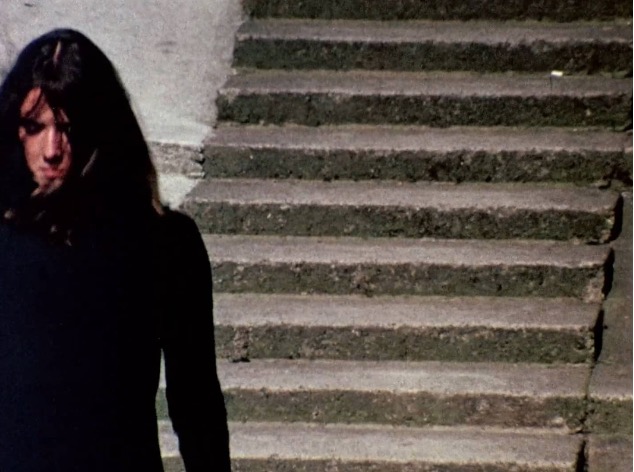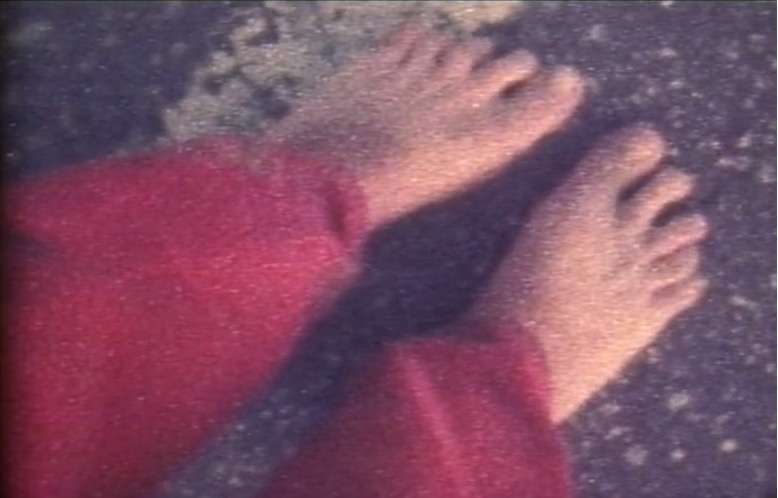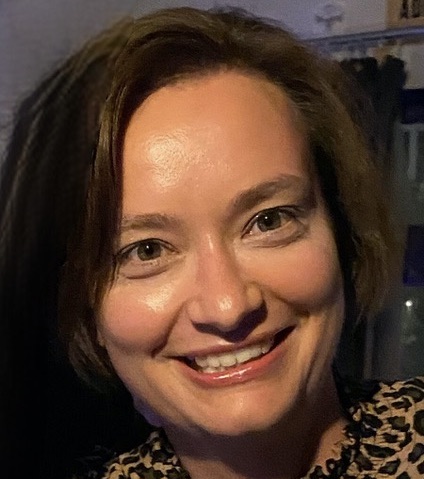By Kornelia Boczkowska
Complementing and broadening the scope of studies on mobilities, walking and film, my forthcoming NRFTS article “Cityscapes, trance states and women walking” is the first attempt to discuss the cinematic representation of walking in contemporary experimental film practice and situate it in the larger context of avant-garde film studies. Walking remains the most basic and sustainable means of transport and everyday practice, which can serve a variety of purposes, ranging from functional or leisurely to therapeutic, meditative and religious. The study of walking and walkability has become increasingly popular not only in scholarship on mobilities and transport geography, and in social science and ethnographic research, but also in film studies, evident in the recent proliferation of wayfaring films and videos. From early cinema, most notably München Berlin Wanderung [Walking from Munich to Berlin] (Oskar Fischinger, 1926) and Bezúčelná procházka [Aimless Walk] (Alexander Hammid, 1930), walking has been used as the central framing device for establishing shots, punctuations and interludes in the narrative, to introduce settings and locations or indicate a character trait. In Italian Neorealist and French New Wave films, such as Vittorio De Sica’s Bicycle Thieves (1948), Umberto D. (1952) and Two Women (1960), Jean-Luc Godard’s À bout de souffle [Breathless] (1960) or Agnès Varda’s Cléo de 5 à 7 (1962) and Sans toi ni loi [Vagabond] (1985), characters, be it migrants, rebels or female drifters, often stroll aimlessly, motivated by escape from poverty and social constraints. Similarly, in the cinema of Béla Tarr (Sátántangó, 1994; Werckmeister Harmonies, 2000) and Gus Van Sant (Gerry, 2002; Elephant, 2003), walking brings associations with freedom, pilgrimage, protest and encounters with the wilderness via the minimalist long take aesthetics typical of slow cinema and ecocinema. In other narrative art films, including Russian Ark (Alexander Sokurov, 2002), Into the Wild (Sean Penn, 2007), Melancholia (Lav Diaz, 2008), Seven Intellectuals in a Bamboo Forest (Fudong Yang, 2008), The Way (Emilio Estevez, 2010) and A Walk in the Woods (Ken Kwapis, 2015), the flâneur and flâneuse also become central characters for whom walking emerges as a meaningful, transformative and healing pursuit, one that can facilitate life transitions and boost self-esteem.
Walking has become a key narrative and visual trope not only for contemporary art cinema, but also for avant-garde film, in which journeys on foot often become the central on-screen activity. Films like Saving the Proof (Karen Holmes, 1979), Beach Walk (Jack Walsh, 1983), D’Est (Chantal Akerman, 1993), Love in the White City (Clive Holden, 2004), Let Each One Go Where He May (Ben Russell, 2009), Walker (Tsai Ming-liang, 2012), Walk On (Philip Brocklehurst, 2018) or What’s Good Bruce? (Paige Taul, 2018) transgress traditional forms of linear narrativity by means of non-standard editing and stylized mise-en-scène, presenting walking as a subjective, self-reflexive and multisensory practice. Similarly, in the films discussed in my article–Crowdog (Vanessa Renwick, 1984/1998), A Walk (Jonas Mekas, 1990), Ordinary Matter (Hollis Frampton, 1972) and Death Songs & Car Bombs (Brendan and Jeremy Smyth, 2013)–walking is a more complex, embodied, disorientating and unconventional experience, be it a trance-inducing practice, a means of reminiscence of the past or a reflection on female liberation, the psychogeography of SoHo and the culture clash. While Crowdog and A Walk are diaries with voiceover narration and Ordinary Matter and Death Songs are structural and trance films set to the chanting of mantras and toneless Mandarin syllables or a ceremonial death song, respectively, all works further challenge the representational nature of walking through a creative use of non-narrative structure, editing and camerawork.
Crowdog is particularly interesting in the way it deconstructs a male-centred cinema of walking that often objectifies women or restricts their on-screen presence, hindering their physical and social mobility. In the cinema of walking women, exemplified by films and videos like At Land (Maya Deren, 1944), Two Women, Cléo de 5 à 7, Messidor (Alain Tanner, 1979), Saving the Proof, Vagabond, Wadjda (Haifaa al-Mansour, 2012) and 10 Hours of Walking in NYC as a Woman (Rob Bliss Creative, 2014), wayfaring female characters are the main force driving the narrative capable of transforming everyday spaces and social structures. For example, Saving the Proof is composed of several alternating images, each showing a woman in black walking almost “invisibly” through various urban and suburban locations, which deprives the heroine of her erotic appeal, instead highlighting the mundanity and complexity of a seemingly ordinary act of her walking, descending stairs or passing buildings, stores and fences. Concerned with the cognitive and perceptual nature of the viewing experience, the film uses a permutational schema, dissolves between subsequent shots, repetitive sounds and the third person perspective to draw our attention to the rhythm of the woman’s gait, empowering her mere presence and distinct identity as the flaneuse. Similarly, Crowdog offers an alternative to the masculine road narrative as it documents Vanessa Renwick’s barefoot walking trip during her stay at the Pine Ridge Indian Reservation in South Dakota. Using deadpan voiceover narration, grainy footage, erratic zoom-ins, close-ups and the shaky hand-held camera with the lens pointed downward at the edge line of the road to track Renwick’s constantly moving feet and her dog moving across the frame of the image, the film defetishizes the female body and instead draws attention to walking barefoot, responding to American Indians’ (particularly the Lakota’s) naturist habits and traditions. In doing so, it shifts the focus from the perils of women’s solo travels to the artist’s nostalgic shoe-free journey and the continuous movement of her walking, driven by her ongoing nonconformist search for personal freedom, which enables her to (re)connect to nature, animals and Indigenous ways of life.


Sharing the use of handheld camera and single-take structure with Crowdog, A Walk is a one-shot unedited film chronicling Jonas Mekas’ aimless solitary walk through SoHo on a rainy day, reflecting on the artist’s immigrant experience and sense of displacement as New Yorker and city dweller. While the filmmaker’s continuous voiceover narration, provided in heavily accented English and a diaristic manner typical of Mekas, guides us across New York City’s landscape and the places he revisits, his camera spontaneously captures the mundanity (and sometimes ugliness) of urban settings, which function as memory sites and (de)construct SoHo with Mekas’ self-deprecating humor. Meanwhile, both Ordinary Matter and Death Songs & Car Bombs are time-lapse films, which present walking as a more ephemeral, sensory, hypnotic and trance-like experience. In Ordinary Matter, composed of single-frame shots, Hollis Frampton’s pixilated walk through landforms, corn fields, historic sites and architectural structures, ranging from Stonehenge to the Brooklyn Bridge, turns into a personal journey into the subconsciousness, whereas in Death Songs, walking, shot in real time and time lapse, serves as a means of inquiry into the aftermath of the 2002 Bali bombings, tracing urban change in Bali’s tourism district of Kuta. My article demonstrates that – compared to narrative art films – many experimental films render walking as a more phenomenological, performative and ambiguous practice, questioning its traditional connotations and the pedestrian’s perspective through a more inventive use of movement, sound and voiceover narration.



Kornelia Boczkowska’s article “Cityscapes, trance states and women walking: Embodied practices of walking in experimental film and video” is available in issue 22.1 of New Review of Film and Television Studies.
Sign up for NRFTS alerts so you’ll know when future articles become available, and enjoy this related read:
Laura Rascaroli, Sonic modernities: capitalism, noise, and the city essay film
Funding: This work is funded by the National Science Centre, Poland, under the project Lost highways, forgotten travels: The road movie in the post-war American avant-garde and experimental film through the lens of women and men filmmakers (grant no. UMO-2018/31/D/HS2/01553).

